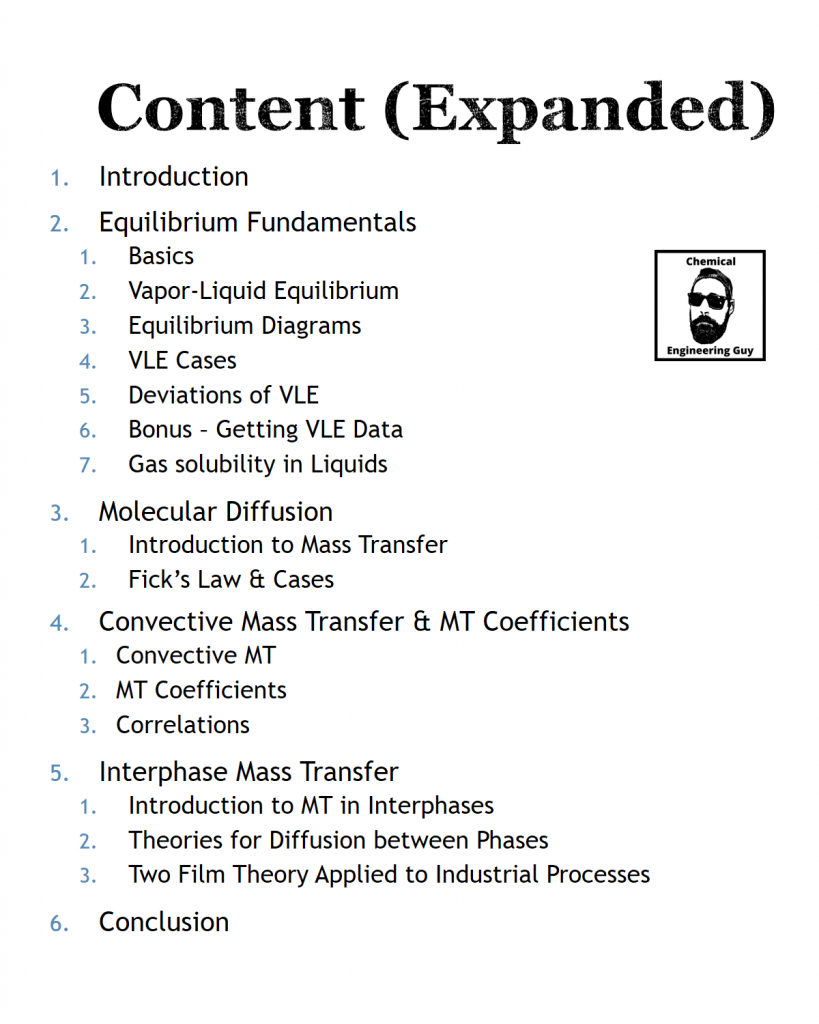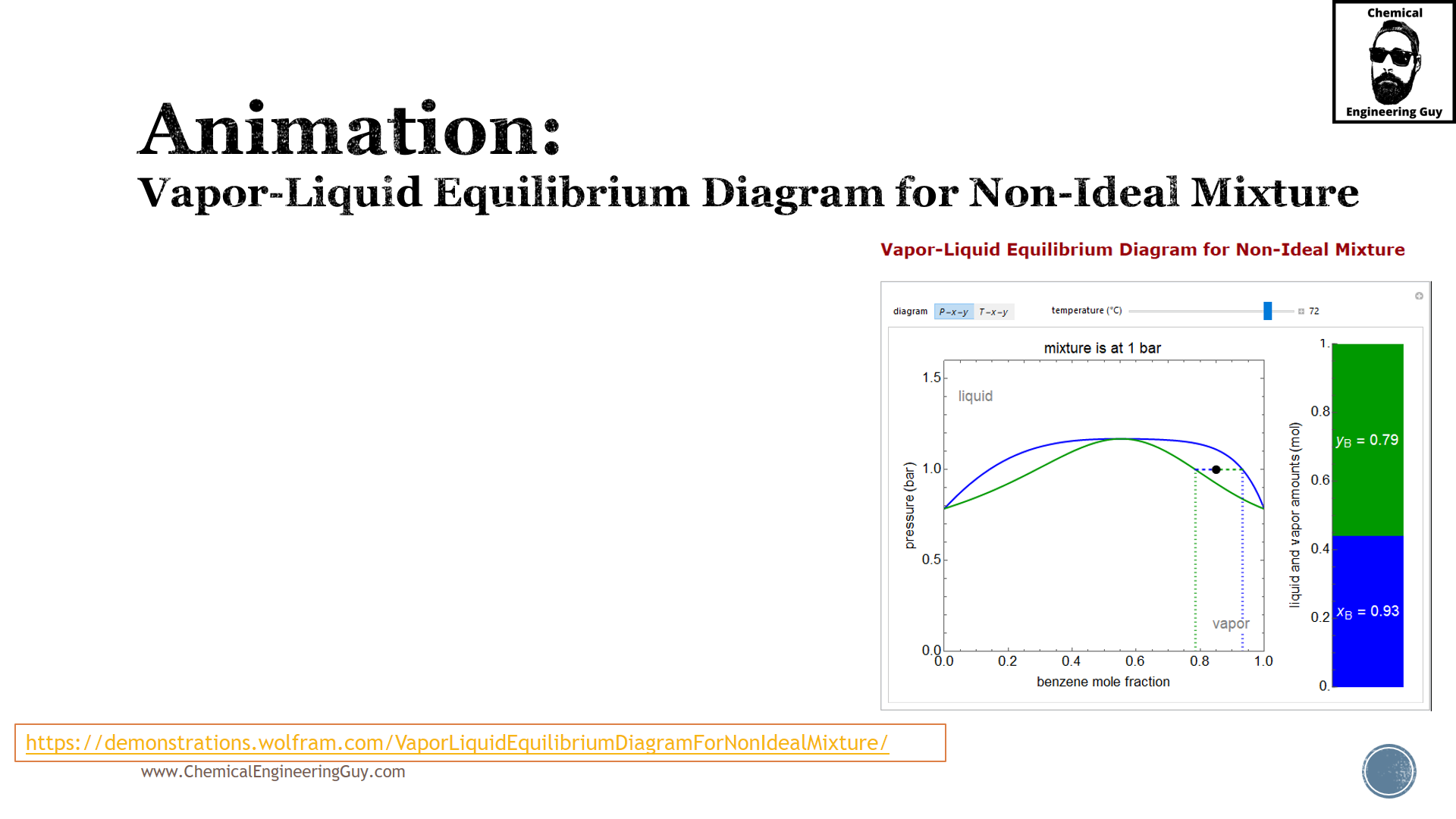Finally! The Course is here!
If you were of those lucky Early Birds then you know by know how great the course is!
If you don’t! Make no worries, we will cover it so you get the idea!
You can read this full blog post or go directly to the SALES Pages of the Course if you want to… In the meantime, check the trailer:
About the Course:
This course covers all the theory required to understand the basic principles behind Unit Operations that are based on Mass Transfer. Most of these Unit Operations (Equipment) are used in Process Separation Technologies in the Industry.Common examples are Distillation, Absorption and Scrubbing.
It is a powerful course which is based mostly in video lectures of Theory, Simulations, Workshops, Worked Exercises and Proposed Homework.
What is the Course Content?

You will be able to understand mass transfer mechanism and processes behind Gas-Liquid and Vapor-Liquid Operations
You will be able to continue with:
- Flash Distillation
- Gas Absorption & Stripping
- Simple Distillation
- Batch Distillation
- Binary Distillation
- Fractional Distillation
- Scrubbers
- Gas Treating
- Sprayers / Spray Towers
- Bubble Columns / Sparged Vessels
- Agitation Vessels
- Packed Towers
- Tray Towers
We will cover:
- Mass Transfer Basics
- Diffusion, Convection
- Flux & Fick’s Law
- The Concept of Equilibrium & Phases
- Gibbs Phase Rule
- Vapor Pressure
- Equilibrium Vapor-Liquid Diagrams (T-xy, P-xy, XY)
- Equilibrium Curves
- Dew Point, Bubble Point
- Volatility (Absolute & Relative)
- K-Values
- Ideal Cases vs. Real Cases
- Henry’s Law
- Raoult’s Law
- Deviations of Ideal Cases (Positive and Negative)
- Azeotropes
- Solubility of Gases in Liquids
- Interphase Mass Transfer and its Theories
- Two Film Theory
- Mass Transfer Coefficients (Overall vs Local)
- Getting Vapor-Liquid and Solubility Data
Why Mass Transfer in Vap-Liq & Gas-Liq?
It is extensively used in the industry.
- You will most likely model/design/operate/control/simulate a Unit Operation or Process involving this topic
Many students fail to understand the concepts behind:
- Absorption
- Distillation
- Humidification & Drying
Even though they might understand, modeling and further analysis is weak due to lack of theoretical fundamentals
These units are the core fundamentals of Separation Processes, understand these and it will be easier to understand other processes
I prepare a blog post in case you want to broaden your knowledge on Flash Distillation and its applications in the Process & Chemical Industry.
What is the Approach to Learning?
Theory
If you have a strong understanding of the theory, then the mathematical model will be easier to obtain, apply and work with… If you do not have the understanding, there is no sense to work with mathematical formulas and models, it is just a waste of time… Remember, you are the mighty Engineer! Everyone is trusting you!
In this sample, we will study the concept of Film and its application to Gas Absorption Process. It is very important to understand what we are doing, and why we need the concept of Film.
Remember that this is just a sample, check out my teaching style, what do we see, the type of lecture (screencast) and so on… I hope you enjoy 🙂
Check out the Lecture Video
[Lecture: Original Film Theory for Gas-Liquid Applications]
(click here)
Exercises
Once you get the theory, it is is crucial to work with numbers, equations and calculations. It really helps a lot to the engineer mind to add numbers, equations and math models to the theory. Many times theory will not be sufficient enough, but when we compliment with an equation or exercises, the engineering mind just “clicks” the knowledge.
All the course is backed up with cool exercises that maximize learning outcomes. I try to use several type of references: several authors, editions, type of industries, applications and so on… This helps you not only to get used to a single type of problem, but to understand that as an engineer you will encounter this type of situation in your daily life.
Check out this video:[Lecture: Ex. Mass Transfer Coefficient & Film Thickness via Original Film Theory in a Packed Absorber]
(click here)
Interactive Animations
We are in 2020, screencasts and videos should not be enough! That’s why I added some interactive Animations. These are mostly models or mathematical demonstrarions from CDF Wolfram. Check out more content from them here.
Most animations are explained, but the overal idea is for YOU to “play” with the model. You need to understand it by yourself, remember when we used to be kids and we were curious on things. We wanted to understand what makes them tick, what happens if, and so on… This is the time for that!
In this Lecture, we cover an Interactive Animation.
The overall idea of the following animation is to understand how vapor-liquid equilbirium can deviate from “ideal” to “non-ideal” conditions. This is common in many cases, such as Water-Ethanol and the formation of Azeotropes is expected as well.
(check out the lecture here)

If you want to download the animation, click here…
I hope you got value from this post! Ensure to share with your friends and colleagues if you think they might find it useful!
Any comments are welcome… Please use the comment section below:



